- Home
- Articles
- Architectural Portfolio
- Architectral Presentation
- Inspirational Stories
- Architecture News
- Visualization
- BIM Industry
- Facade Design
- Parametric Design
- Career
- Landscape Architecture
- Construction
- Artificial Intelligence
- Sketching
- Design Softwares
- Diagrams
- Writing
- Architectural Tips
- Sustainability
- Courses
- Concept
- Technology
- History & Heritage
- Future of Architecture
- Guides & How-To
- Art & Culture
- Projects
- Interior Design
- Competitions
- Jobs
- Store
- Tools
- More
- Home
- Articles
- Architectural Portfolio
- Architectral Presentation
- Inspirational Stories
- Architecture News
- Visualization
- BIM Industry
- Facade Design
- Parametric Design
- Career
- Landscape Architecture
- Construction
- Artificial Intelligence
- Sketching
- Design Softwares
- Diagrams
- Writing
- Architectural Tips
- Sustainability
- Courses
- Concept
- Technology
- History & Heritage
- Future of Architecture
- Guides & How-To
- Art & Culture
- Projects
- Interior Design
- Competitions
- Jobs
- Store
- Tools
- More
The Future of Architecture: How the BIM Industry Is Changing Design and Construction
Explore how Building Information Modeling (BIM) is revolutionizing architecture with enhanced collaboration, precision, and sustainable practices. Discover its integration with AI, VR, and cloud computing, benefits for design efficiency, and the challenges that shape its future in transforming the AEC industry.

Architecture is evolving faster than ever, and the Building Information Modeling (BIM) industry is at the heart of this transformation. As technology advances, we’re seeing a shift in how architects, engineers, and construction professionals collaborate to create smarter, more efficient designs. BIM isn’t just a tool—it’s reshaping the way we approach the entire design and construction process.
From sustainable building practices to enhanced project visualization, BIM is driving innovation across the industry. It’s allowing us to solve complex challenges, reduce waste, and deliver projects with greater precision. As we look to the future, it’s clear that BIM will continue to redefine how we design and build, pushing the boundaries of what’s possible in architecture.
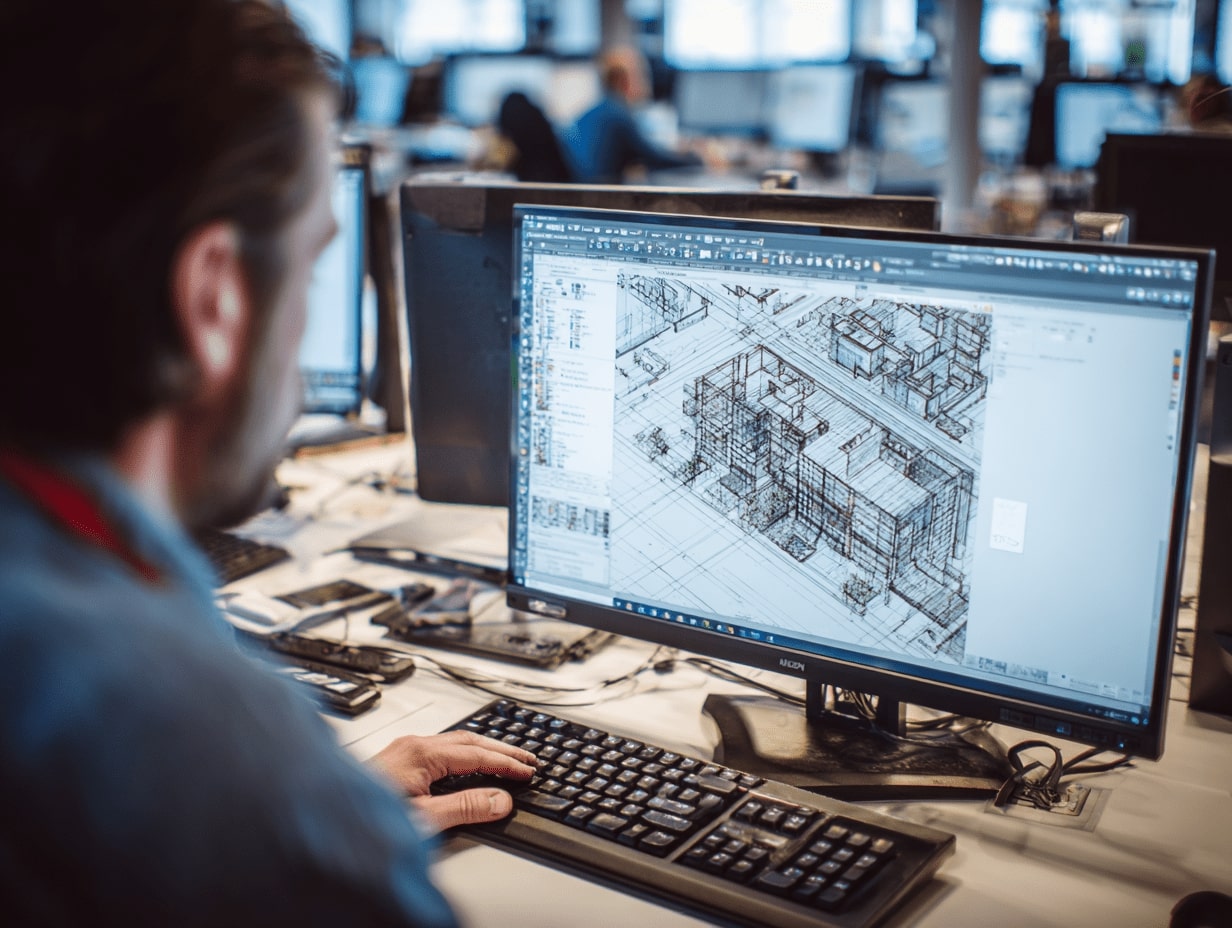
Table of Contents
ToggleThe Evolution Of The AEC Industry
The Architecture, Engineering, and Construction (AEC) industry has transformed significantly due to advancements in technology and shifting demands. Traditional practices are giving way to innovative methods, with BIM leading the charge.
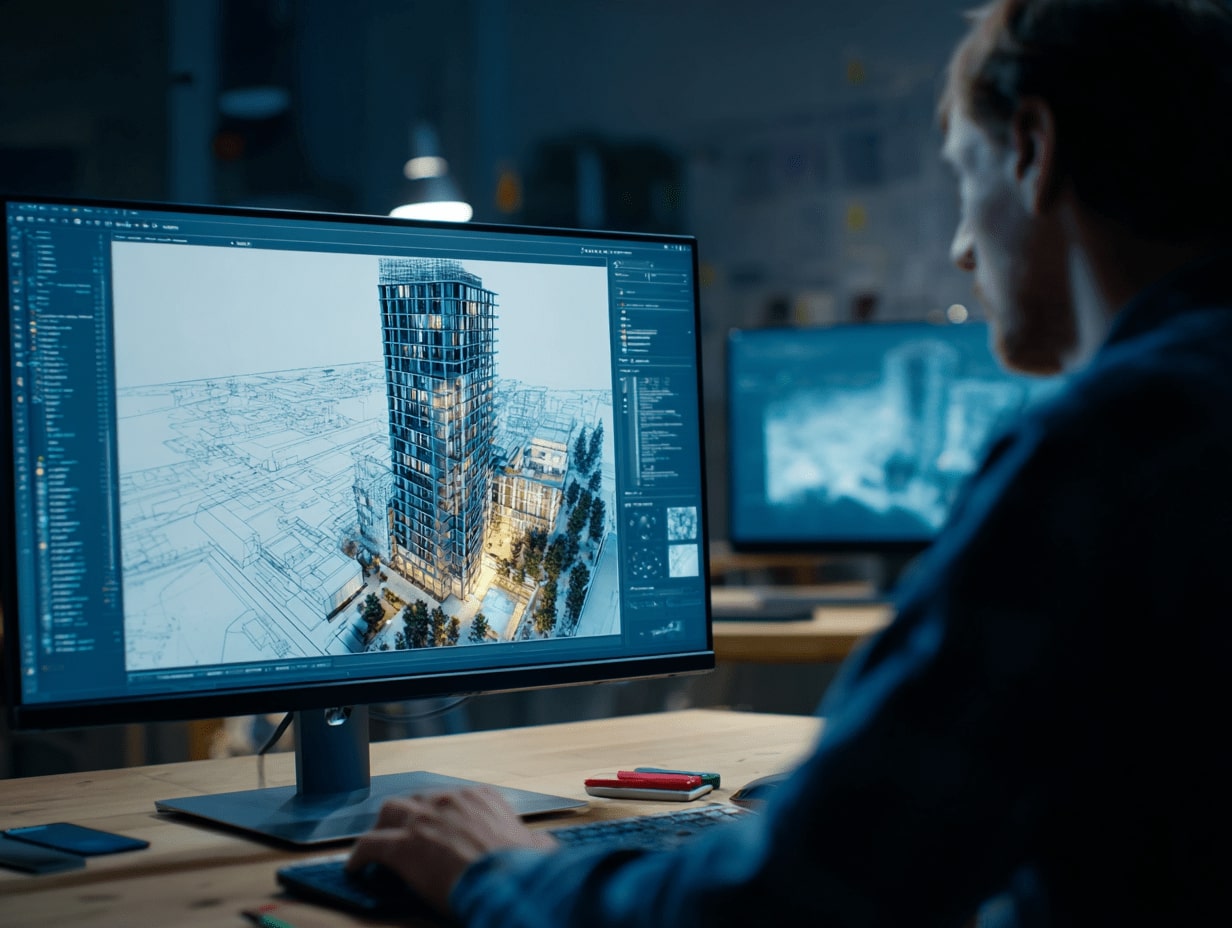
Traditional Approaches Vs. Modern Innovations
Traditional AEC practices relied heavily on 2D designs, manual drafting, and isolated workflows. These methods often caused miscommunication and inefficiencies, such as design errors or material waste. For example, changes in one discipline frequently failed to synchronize across others, leading to delays.
Modern innovations emphasize integration, digital tools, and data-driven processes. Digital twins, parametric design, and cloud-based collaboration have replaced outdated techniques. These advancements ensure real-time updates, better coordination, and more informed decision-making throughout project lifecycles.
The Rise Of BIM: A Game Changer
BIM integrates architecture, engineering, and construction teams into a unified platform for data-rich models. Unlike 2D methods, BIM offers 3D visualizations, enabling us to anticipate challenges before construction begins. This shift minimizes costly errors and shortens project timelines.
The most transformative feature of BIM is its ability to incorporate real-time data. Platforms like Autodesk Revit and Archicad allow for continuous updates, ensuring consistency across all project stages. Additionally, BIM supports sustainable practices by integrating energy analysis, reducing material waste, and enhancing resource efficiency.
Understanding BIM And Its Core Benefits
Building Information Modeling (BIM) represents a transformative approach in the Architecture, Engineering, and Construction (AEC) industry. Its data-centric methodology drives innovation, enabling seamless collaboration and improved project outcomes.
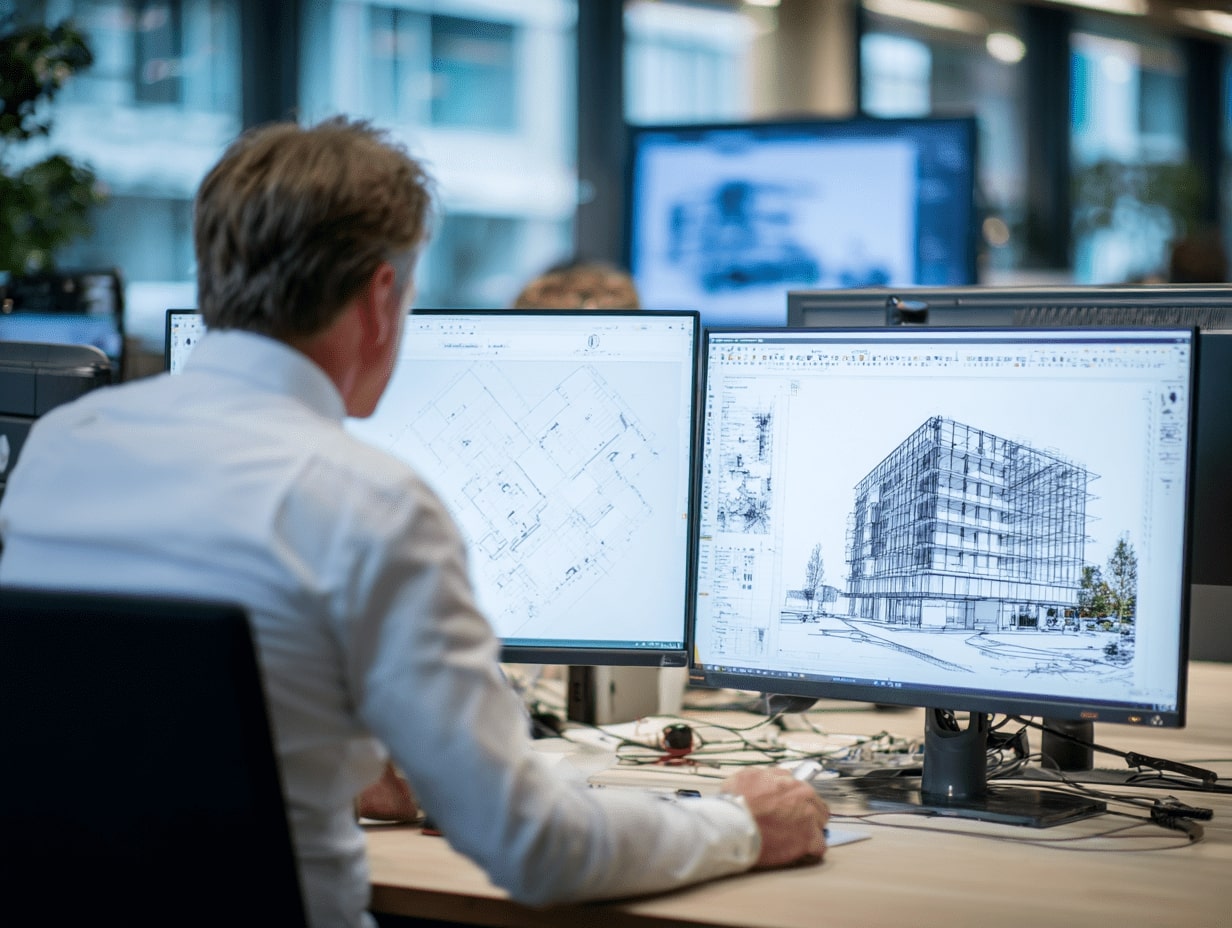
What Is BIM?
BIM is a digital process that integrates multidisciplinary data into a centralized 3D model. This model serves as a detailed representation of a building’s physical and functional characteristics, accessible throughout its lifecycle—design, construction, operation, and maintenance. Unlike traditional tools, BIM supports interactive, data-rich environments that enhance precision and communication.
We use tools like Autodesk Revit, Archicad, and Navisworks to enable the development of these comprehensive models. These platforms allow real-time updates and facilitate coordination among architects, engineers, and construction teams. BIM’s system-oriented approach ensures that every modification is reflected across all project domains.
Key Benefits For Architects And Designers
BIM streamlines workflows and enhances design efficiency. Architects and designers rely on its advanced visualization capabilities to test concepts, assess feasibility, and make data-driven decisions. For example, using 3D models, we can identify design flaws before construction, saving time and expenses.
- Improved Collaboration: BIM integrates all stakeholders onto a shared platform, enabling consistent communication. Teams can collaborate on cloud-based systems like BIM 360, ensuring real-time changes are visible to all participants.
- Enhanced Accuracy: BIM minimizes errors by automating data updates across models. For instance, adjustments to a structural element automatically cascade to schedules and cost estimates, maintaining model continuity.
- Energy Efficiency: BIM supports sustainability by embedding energy analysis into early design stages. Tools like Green Building Studio help optimize material usage, lower operational costs, and reduce environmental impact.
- Time and Cost Savings: Early problem identification using clash detection tools reduces rework, while precise scheduling coordinates tasks effectively. We see projects completed faster and under-budget through BIM’s predictive capabilities.
BIM empowers architectural innovation by integrating technology with functional design, allowing us to deliver smarter, more sustainable buildings.
How BIM Is Reshaping The Architectural Landscape
BIM is transforming architecture by enabling unprecedented levels of collaboration, precision, and efficiency. The integration of intelligent, data-driven tools is redefining how projects are designed, managed, and delivered.
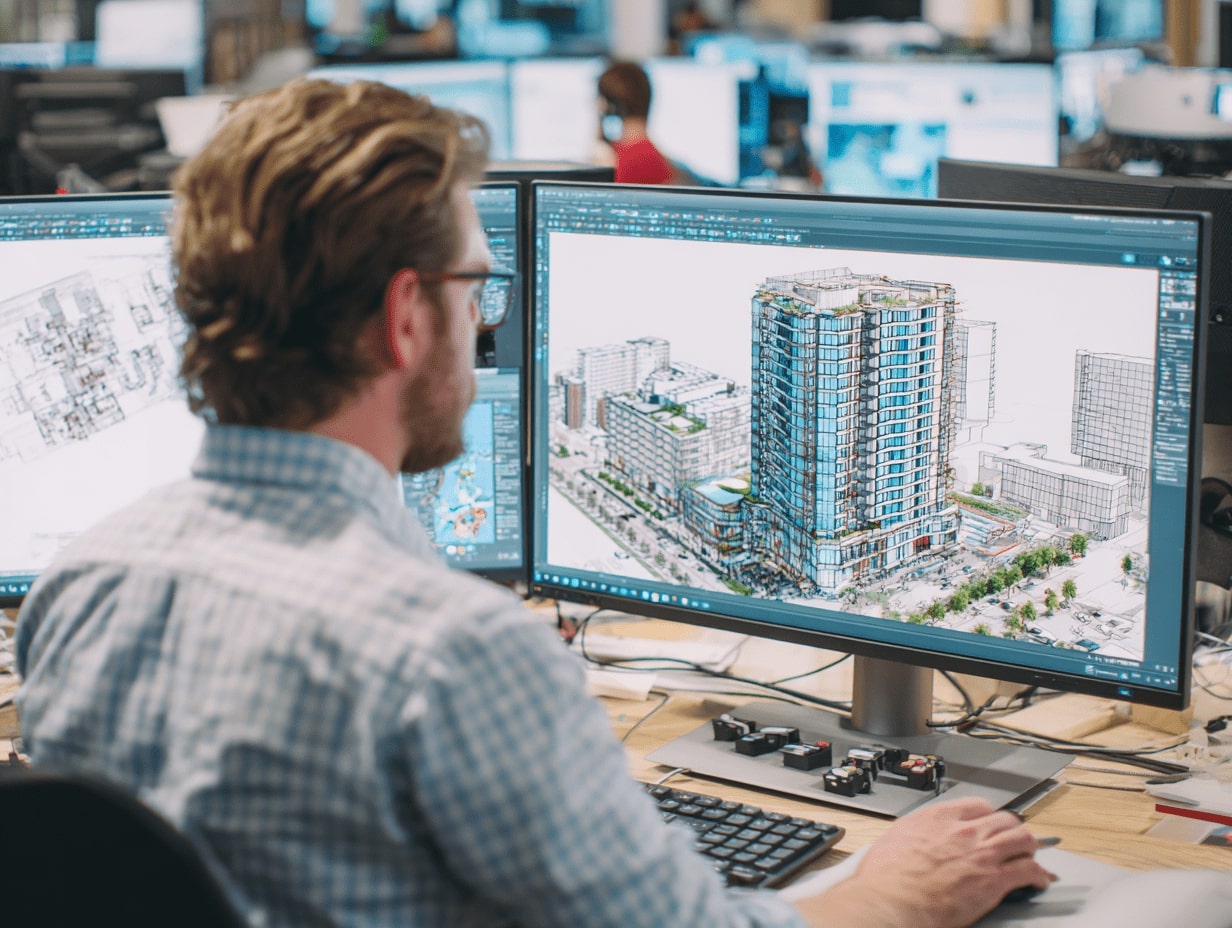
Improved Collaboration And Communication
BIM centralizes project data, creating a single source of truth for all stakeholders. Teams use shared platforms like Autodesk BIM 360 to manage designs, revisions, and documentation in real time. This transparency reduces miscommunication by ensuring access to up-to-date information across disciplines. For example, architects, engineers, and contractors can collaborate on clash detection, resolving conflicts before construction begins. Cross-team alignment accelerates decision-making and minimizes costly delays.
Enhanced Design Precision And Sustainability
BIM enhances design precision through data-rich modeling and automated processes. Tools like Revit and Archicad allow architects to create detailed 3D representations that include structural, electrical, and mechanical systems. This multidisciplinary integration reduces errors often missed in 2D or manual methods.
Sustainability is integrated during the early design phases. BIM supports energy simulations, material analysis, and lifecycle assessments, enabling resource-efficient, eco-friendly designs. For instance, architects can evaluate energy performance or daylighting with advanced simulation tools, achieving compliance with green building standards.
Faster Project Delivery And Cost Efficiency
BIM accelerates project timelines through improved planning and real-time updates. Teams streamline workflows with cloud-based coordination, reducing redundancy and rework. Tools like Navisworks integrate scheduling (4D) and cost estimation (5D) into the process, enhancing accuracy and predictability.
Cost savings stem from reduced material waste, fewer design errors, and optimized resource allocation. Early identification of potential issues decreases unforeseen expenses, ensuring projects stay within budget. By delivering higher-quality results faster, BIM offers a competitive advantage in today’s fast-paced architectural market.
The Role Of Emerging Technologies In BIM’s Growth
Emerging technologies are pivotal in driving BIM’s growth, transforming how architectural projects are conceptualized, executed, and delivered. By integrating advanced tools, the BIM industry is scaling its impact across collaborative workflows, precision modeling, and sustainable design.
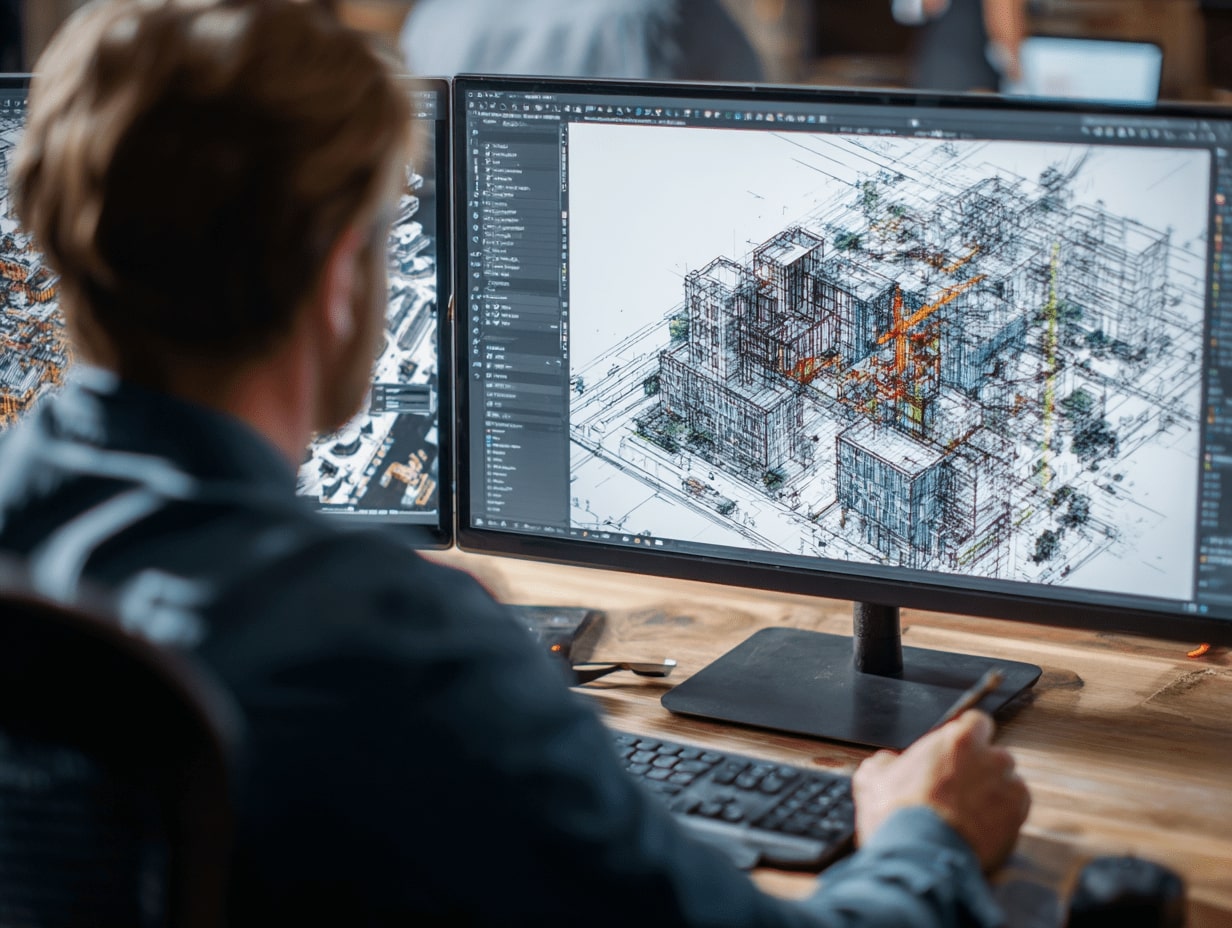
Artificial Intelligence And Machine Learning
Artificial Intelligence (AI) and Machine Learning (ML) enhance BIM’s ability to process vast data sets efficiently. These technologies automate repetitive tasks, such as clash detection and design error analysis, enabling teams to focus on creativity and problem-solving. Predictive analytics, powered by ML algorithms, anticipates project risks, optimizing resource allocation and ensuring timely execution. We see AI applications like Dynamo and ML frameworks helping architects design smarter, adaptive buildings that align with dynamic user needs.
Virtual Reality (VR) And Augmented Reality (AR)
VR and AR revolutionize BIM by offering immersive visualization of projects. VR creates simulated environments for virtual walkthroughs, enabling stakeholders to experience designs and suggest adjustments before construction. AR overlays BIM models onto physical spaces, facilitating on-site planning and real-time problem-solving. Tools like Autodesk Stingray and Unity 3D streamline this integration, enhancing collaboration, decision-making, and stakeholder engagement across project phases.
Cloud Computing And Data Management
Cloud computing transforms BIM collaboration by enabling real-time data sharing and updates. Platforms like BIM 360 and Trimble Connect centralize project data, reducing inefficiencies and boosting transparency among teams across different locations. Scalable cloud storage supports large, data-rich models, while robust data management optimizes version control and ensures consistent documentation. These capabilities deepen BIM’s role in fast, efficient, and well-coordinated project execution.
Challenges Facing The BIM Industry
The BIM industry faces several challenges that impact its widespread adoption and effectiveness. Addressing these hurdles is essential for leveraging BIM’s full potential across the architecture, engineering, and construction sectors.
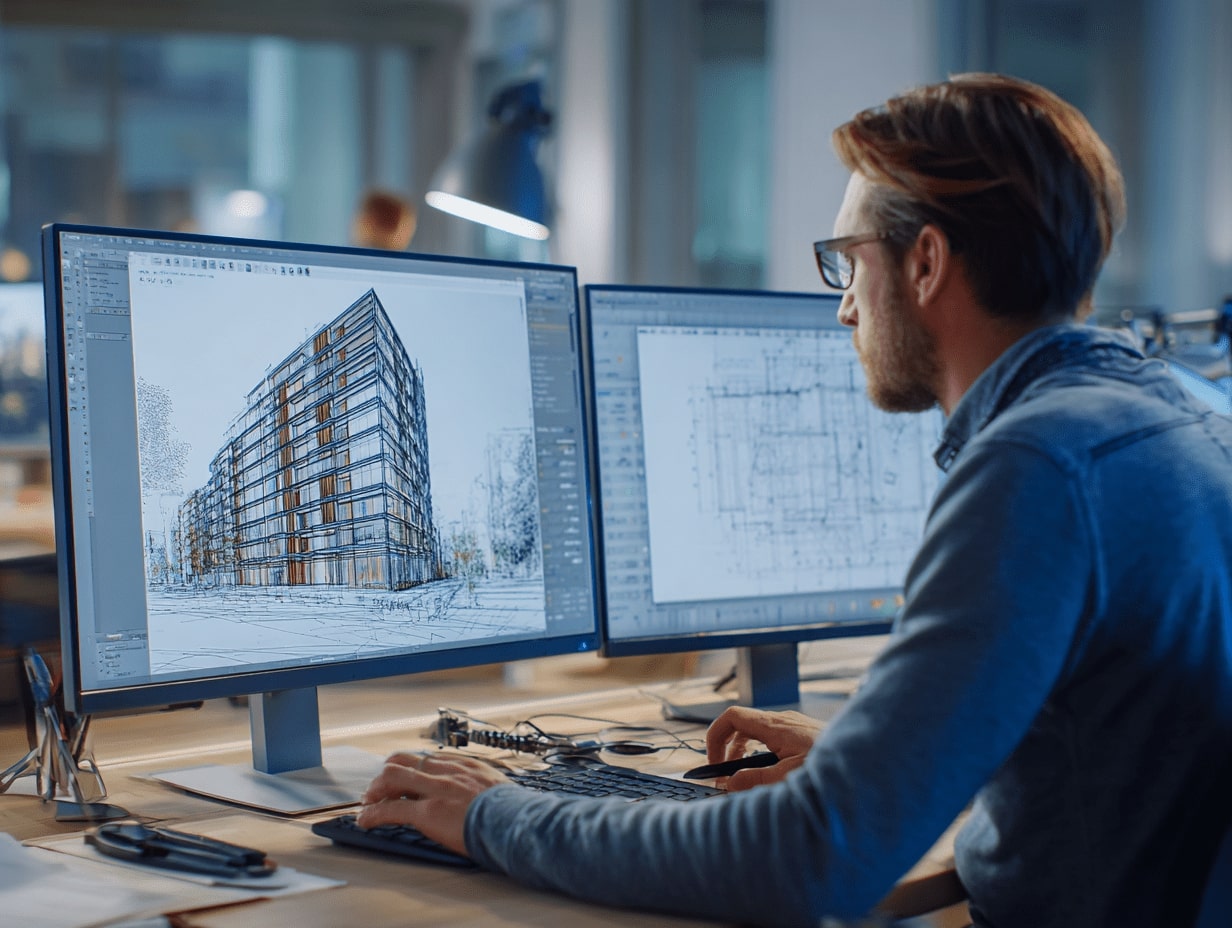
Adoption Barriers In Small Firms
Small firms often struggle to implement BIM due to financial and resource constraints. Licensing costs for platforms like Autodesk Revit or Archicad, coupled with the investment in hardware upgrades, can overwhelm limited budgets. Additionally, smaller teams may find it difficult to dedicate time and personnel to learn and integrate BIM alongside ongoing projects. This results in slower adoption rates compared to larger firms with more robust infrastructures.
Training And Skill Set Gaps
The lack of adequate training hinders BIM’s effective usage across teams. Professionals transitioning from traditional methods frequently encounter steep learning curves due to insufficient access to training programs or certification courses. For example, mastering tools like Autodesk Navisworks or Dynamo requires specialized skills. Without ongoing education, the gap between technology capabilities and user expertise grows, reducing BIM’s potential efficiency.
Legal And Data Security Concerns
Legal and security challenges restrict BIM’s utilization, especially on large-scale or multi-national projects. Disputes over data ownership and intellectual property can arise when diverse stakeholders collaborate on shared models. Moreover, cloud reliance for data sharing introduces vulnerabilities, including unauthorized access or data breaches. Ensuring compliance with cybersecurity standards is crucial to maintaining trust in BIM-based workflows.
Predictions For The Future Of Architecture With BIM
The future of architecture is tightly interwoven with the evolution of Building Information Modeling (BIM), driving transformative changes across the industry. Emerging technologies, data integration, and automation are reshaping how we design, build, and manage structures.

Integration Of Smart Cities And BIM
BIM plays a critical role in the development of smart cities by syncing detailed building models with urban planning initiatives. By merging IoT data, GIS mapping, and digital twins, we improve infrastructure efficiency and enhance city management. For instance, energy consumption in urban buildings can be monitored, analyzed, and optimized through predictive modeling within the BIM framework. This integration supports sustainable urban growth while streamlining resource allocation.
Advancements In Automation And Robotics
Automation and robotics enabled by BIM are transforming construction practices. Automated clash detection ensures error-free designs, while robotics, guided by BIM data, simplifies tasks such as bricklaying, concrete pouring, and steel assembly. For example, robotic arms programmed via BIM models reduce labor-intensive processes and increase precision in structural fabrication. These advancements save time, enhance safety, and lower project costs by reducing human error.
The Push Toward Total Industry Standardization
Standardization across the Architecture, Engineering, and Construction (AEC) industry is becoming more achievable with BIM as a central framework. Adopting universal data standards like the Industry Foundation Classes (IFC) ensures seamless interoperability between different software platforms, reducing barriers in cross-disciplinary collaborations. We also expect regulatory bodies to mandate BIM compliance for public and environmental projects, promoting consistency and accountability in design and construction processes.
Conclusion
BIM continues to transform architecture, pushing boundaries in collaboration, design precision, and sustainability. Its integration into emerging technologies like AI, VR, and cloud computing underscores its role as a driver of innovation. While challenges such as cost barriers, training gaps, and data security concerns remain, addressing these issues strengthens BIM’s adoption across the industry.
As the AEC sector evolves, BIM enhances efficiency and accuracy by integrating real-time data, automating workflows, and reducing waste. The alignment between BIM and sustainable design fosters eco-conscious practices, meeting global demands for responsible urban development. Standardized data sharing protocols, such as IFC, further promote transparency and interoperability, creating a cohesive industry framework.
Future advancements in BIM, paired with smart cities and automation, redefine architectural opportunities. By leveraging these developments, we ensure architecture remains dynamic and responsive to the challenges and innovations of tomorrow.
- 3D modeling for architecture
- Advanced construction methods
- architectural design evolution
- BIM construction management
- BIM design software
- BIM for sustainable design
- BIM in Architecture
- BIM industry trends
- BIM project management
- BIM technology adoption
- Building Information Modeling
- Collaborative design tools
- Construction design technology
- construction process improvement
- digital construction tools
- Future of Architecture
- innovative architecture solutions
- Integrated design processes
- Smart Building Design
- Virtual design in architecture
Submit your architectural projects
Follow these steps for submission your project. Submission FormLatest Posts
BIM in Architecture: What You Need to Know for Smarter Building Design
Discover how Building Information Modeling (BIM) is transforming architecture with intelligent 3D...
How the BIM Industry is Transforming Modern Construction Practices for a Better Future
Discover how Building Information Modeling (BIM) is revolutionizing the construction industry by...
The Role of BIM in Revolutionizing Construction Projects: Improving Efficiency and Collaboration
Discover how Building Information Modeling (BIM) is revolutionizing the construction industry by...
Understanding the Impact of BIM on the Construction Industry: Revolutionizing Building Projects
Discover how Building Information Modeling (BIM) is revolutionizing the construction industry by...




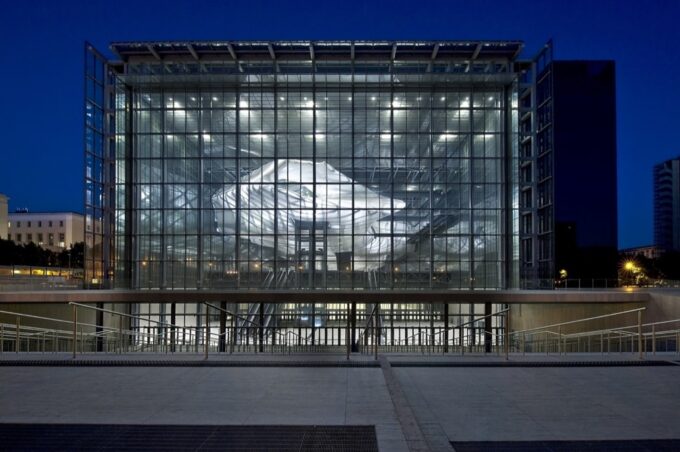







Leave a comment